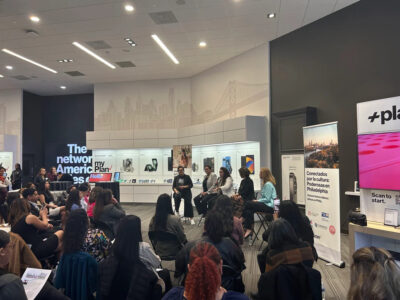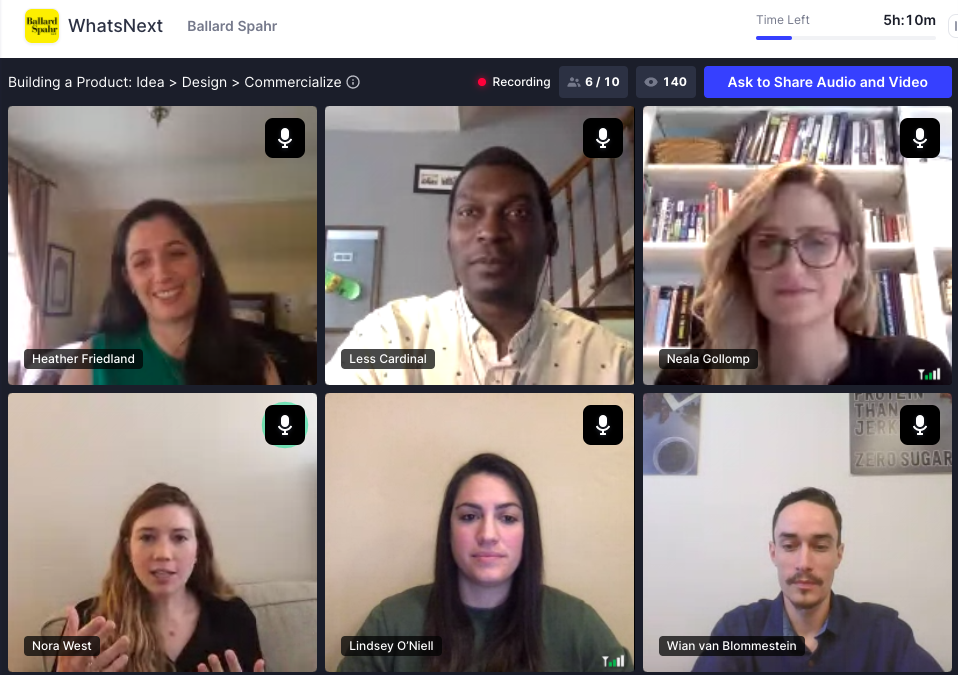
This editorial article is a part of Design Month of Technical.ly's editorial calendar.
Throughout July at Technical.ly, we’re diving into the topic of design, focusing extra reporting on UX, graphic design, product development, accessibility and the like.
This topic spans tech’s look and feel, trends throughout the years and new innovations, but we’re also looking at how current events have made an impact on the design world. Last month, at Ballard Spahr’s WhatsNext event, five product professionals and company leaders talked with Technical.ly Product Manger Less Cardinal about how they take ideas through to commercialization.
And something that piqued our interest was what they had to say about how unprecedented events in 2020 — the COVID-19 pandemic, a new recession, a growing civil rights movement — have had an impact on design of their company’s products.
Nora West, Guru’s senior product manager, said that her team talks a lot about accessibility and its standards. When folks are working from home or are struggling with internet access or don’t have the same access to resources, the product still needs to work well.
“It’s thinking about language, or screens that have different color variations, or different qualities of computer screens themselves,” she said.
Neala Gollomp, Comcast’s senior director of product, said that more people are watching and streaming right now because they’re stuck at home. In March, Comcast found that customers were using an average of 32% more internet. The company also saw a 50% increase in gaming downloads, a 38% increase in entertainment streaming and a nearly 50% increase in Voice Remote requests for “free movies.”
All of this new information has changed Comcast’s product and design, Gollomp said. The company is designing X1 to prioritize things like news or free movies, because that’s what viewers are gravitating toward.
“We’re really making sure we’re meeting the needs of customers, whether that’s finding new trending commands, or setting up new pages, like ‘Black voices,’ ‘Black stories,'” she said.
And design thinking doesn’t just touch on the process of changing a product, but also in every step it takes to get a product to a customer. Heather Friedland, VP of product management health and wellness at Ancestry.com, told attendees of the panel that design thinking runs from the product’s idea stage to shipping.
For her, that means all departments must work closely together to understand the vision. Product designers, sales people and marketing must all be on the same page about what the experience should be.
“One way we use design is trying to identify what problems we see, and the product roadmap and journey should inform marketing strategies,” she said. “You want [the customer’s] experience to resemble what they thought they were buying from marketing from the minute you order through the unboxing process.”
Join the conversation!
Find news, events, jobs and people who share your interests on Technical.ly's open community Slack

Philly daily roundup: A better coffee supply chain; Philly Tech Week returns; Apply to Pennovation Accelerator

Philly daily roundup: Startups want office culture; New Venture Lab cohort; Penn Med's new AI leader

Will the life sciences dethrone software as the king of technology?


